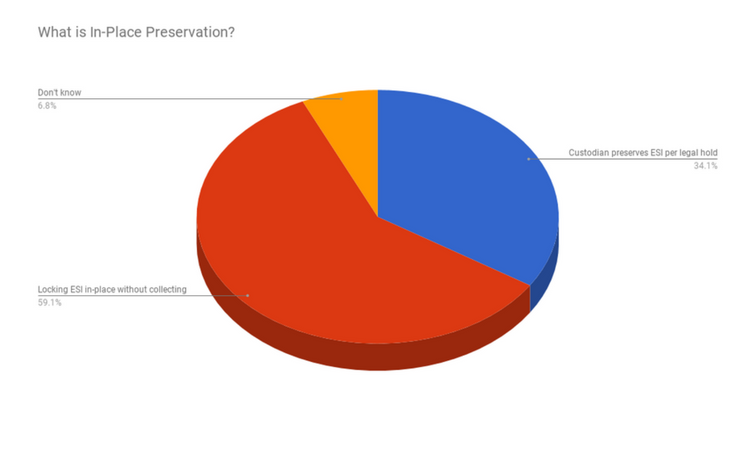E-Discovery is an ever-changing field. There’s always new technology cropping up—whether it’s a means of communication that legal teams need to account for or a new software solution that promises to change how e-discovery happens. The past couple of years have witnessed a major revolution in the way most organizations conduct business on a daily basis (Hello, Zoom, Slack, Teams, Google Meet, and all those other asynchronous and remote communication platforms we’re seeing out there every day!)—and together, they’re making the case for much broader adoption of an under-appreciated piece of the e-discovery professional’s toolkit: In-Place Preservation.
Misconceptions about In-Place Preservation
First, why is in-place preservation (IPP) so important? E-Discovery professionals are concerned about accidental (or intentional) spoliation of ESI by custodians. In an Exterro survey of e-discovery professionals, deletion or modification of ESI by custodians was overwhelmingly the top concern as a cause of potential spoliation, receiving over 60% of the responses. While spoliation isn’t necessarily as common as it was in the early days of e-discovery, it hasn’t disappeared altogether, which many thought might be the case after the 2015 FRCP amendments to Rule 37 (e).

Despite their fears, over 40% of the responding e-discovery professionals still do the very thing that they’re afraid of causing severe consequences—trusting custodians to preserve data correctly—and a similar proportion solve the problem by over-collecting, a solution that has its own negative consequences: higher costs in the review phase and increased risk.

Why is this the case? The only explanation that makes sense is lack of awareness of what IPP can do for e-discovery professionals in this situation—a theory that is borne out by the data in Exterro’s research. Over 40% of the survey respondents were unaware that in-place preservation is not custodian self-preservation, but rather a technology that allows legal teams to lock data down in-place, on networks or in other software platforms, preventing accidental or intentional spoliation from happening.

The heartening thing is that 59% of our survey respondents do understand what in-place preservation is and the benefits of preserving ESI in place, without collecting it. In terms of e-discovery, it’s like having your cake and eating it too. You minimize the risk of spoliation, but because you aren’t actually collecting the data, you don’t have to incur the costs of storage or document review (at least until review is necessary).
This confusion may stem from the older notion of “preserving in place,” whereby organizations relied on custodians to identify and preserve documents subject to legal hold. In fact, in-place preservation technology relies on close integration with email, collaboration, and archiving applications to protect and secure ESI from accidental deletion or modification prior to collection by creating a legal and defensible copy of everything that the individual custodian is working on to ensure that it is not lost during the case.
It’s Time for In-Place Preservation
Given the spoliation concerns of e-discovery professionals, which largely boil down to the potential for human error during ESI preservation, in-place preservation is a technology whose time has arrived.
“We learned the perils of over-collection and early collection, which shifted the paradigm to strong legal hold notifications. And now, we all should understand the perils of relying upon self-collection,” Bobbi Basile, Managing Director at HBR Consulting, explains. “Where clients are moving is to technology tools that facilitate in-place preservation without disrupting the custodians’ day-to-day activities.”
In-place preservation is an outstanding solution to that problem. A single user can use an automated script to preserve multiple data sources in-place. It saves cost on the human element, as well as significant costs for storage and forensic preservation.
Learn all about in-place preservation and other essential e-discovery technology in the Exterro whitepaper, The Legal Tech You Must Have in 2022.


